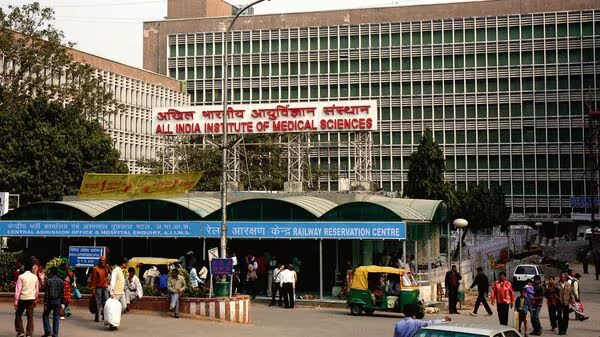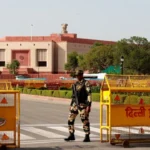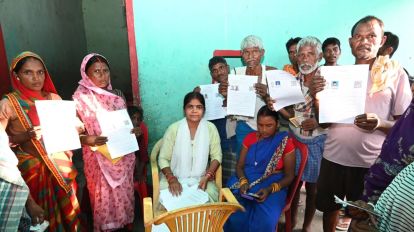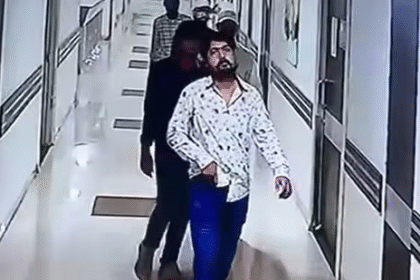15-Year-Old Girl Set on Fire by Miscreants in Odisha’s Puri, Airlifted to AIIMS Delhi for Treatment
Puri, Odisha – a city synonymous with faith, culture, and divine serenity – was shaken to its core by an act so cruel, so incomprehensible, that it has forced the entire state to confront its darkest fears. Amidst the chants echoing from the Jagannath Temple and the rhythmic crashing of waves along the Golden Beach, a violent tragedy unfolded in a quiet lane of a Puri neighborhood. A 15-year-old girl, full of dreams and laughter, was set ablaze by a group of unidentified miscreants in what is now being described as one of the most chilling crimes in recent memory.
It was supposed to be a regular evening. The victim, who we’ll refer to as Anaya (name changed for privacy), had just returned from tuition, greeted her grandmother, and was helping prepare the evening meal when the horror began. Witnesses say that moments later, there was a scream – long, guttural, and harrowing. Neighbors rushed to find Anaya engulfed in flames, writhing in agony. The air smelled of burnt plastic and kerosene. The attackers had vanished, leaving behind only a canister and a nightmare.
Local police were called immediately, but what followed was a scene of chaos. The community, largely stunned into silence, gathered outside the small thatched house. Women wept openly. Men clenched their fists in helpless rage. “This is not just a crime. This is terror,” said a neighbor, visibly shaken. Within the hour, Anaya was moved to the district hospital in a critical state. Her burns were extensive – nearly 60% of her body had been scorched. The doctors struggled. Her condition deteriorated rapidly.
Amid mounting pressure from civil society and media, the Odisha government made the urgent decision to airlift her to AIIMS Delhi, one of India’s premier medical institutes. The air ambulance was arranged overnight. She was sedated and flown with a team of critical care experts, her fragile body battling against the odds. Outside the hospital in Puri, her family sat in a tight circle, stunned and silent. Her father, a daily wage laborer, had not spoken a word for hours. Her mother, inconsolable, kept asking, “Why her?”
As Anaya fought for her life, the investigation gained pace. Police officials hinted at a revenge angle. Some spoke of unresolved disputes involving her family. Others suggested a deeper, more sinister motive – possibly linked to caste tensions or gender-based intimidation. The streets of Puri, meanwhile, erupted in protest. Students, women’s rights groups, and residents marched with banners that read: Justice for Anaya. The case had sparked a state-wide outcry.
Social media was quick to amplify the incident. Hashtags like #JusticeForAnaya, #OdishaBurning, and #StopViolenceAgainstGirls began trending. Celebrities, politicians, and activists condemned the act. Prominent voices demanded not just an arrest, but structural change. “How many more daughters must be sacrificed before we act?” tweeted one public figure.
The Chief Minister of Odisha issued a statement, calling the incident “inhuman and unforgivable,” and promised swift action. A Special Investigation Team (SIT) was formed. Forensic teams arrived at the scene. CCTV footage was analyzed. Sketches were drawn. The state’s DGP flew to Puri, underlining the seriousness of the matter.
But for Anaya’s family, all of this was a blur. Their focus was singular – her survival. At AIIMS Delhi, doctors began the arduous task of saving what was left of her fragile frame. Burn management, infection control, sedation, and surgeries – the treatment was intense. She drifted in and out of consciousness. In rare moments of clarity, she asked for her mother. She tried to speak. Her lips moved. Her eyes watered.
Journalists gathered outside the hospital gates. News anchors framed headlines with urgency and outrage. “Girl Set on Fire in Puri – India’s Daughters Still Unsafe,” read one. “Temple Town Horror: 15-Year-Old Battles Death,” read another. The country was watching. The country was angry.
Yet, amid the noise, a deeper question began to rise: What kind of society allows its children to be set on fire in broad daylight and then struggles to explain why?
As Part 1 of this unfolding national tragedy comes to a close, India is forced to reckon with the cruel duality of its modern existence – development on one hand and devastating brutality on the other. Puri, the land of peace, has become a symbol of pain. And a girl named Anaya lies on a hospital bed, her future uncertain, her story just beginning to be told.
At AIIMS Delhi, the elite burns unit had turned into a makeshift war room. Doctors, nurses, and trauma specialists huddled over charts, monitors, and medicine trays. Anaya was heavily sedated, her body covered in sterile dressings, machines breathing for her, beeping steadily as if counting down time itself. Outside the glass door of her ICU chamber, her mother sat on the cold bench for hours, unmoving. She had refused the offer of a hotel stay. “My daughter is alone. I will not sleep until she opens her eyes,” she whispered to a reporter through tears.
The medical updates were grim but cautiously hopeful. Doctors noted that while her burns were severe—covering over 60% of her body, many of them third-degree—her vital organs were holding. A multi-disciplinary team began the painful process of debridement, tissue stabilization, and infection control. Every procedure was a risk. Every hour mattered.
Back in Odisha, the case had exploded into a full-blown political issue. The state Assembly, which had convened for its routine session, found itself gripped by a rare unity—opposition and ruling benches alike demanded a judicial inquiry. The Speaker allowed an emergency discussion. Leaders from all sides spoke of the brutal symbolism of the act—how it represented not just a personal tragedy but a societal failure.
The Chief Minister ordered the suspension of the local Station House Officer (SHO), citing negligence. A woman IPS officer was appointed to lead the SIT. “We will not rest until the last person involved is behind bars,” she declared during a press conference. Forensic reports revealed that the inflammable substance used was a commercially available industrial solvent, raising concerns about premeditation and access to restricted chemicals.
Meanwhile, media channels raced to dig deeper. What emerged was chilling: Anaya’s family had been involved in a land dispute with a politically connected local contractor. The man, whose name the police withheld pending confirmation, had allegedly issued veiled threats in the past. In a village where power flowed through caste and connections, justice had always been elusive. Now, with the spotlight burning bright, those dark secrets were being dragged into daylight.
Human rights organizations arrived in Puri. They met with the family, offered legal help, and submitted formal complaints to the National Human Rights Commission. The National Commission for Women took suo motu cognizance. Anaya’s name—though anonymized in news stories—became symbolic of the thousands of nameless girls who suffer brutalities in silence every year.
As the week wore on, a wave of candlelight marches swept across Indian cities—Kolkata, Mumbai, Bengaluru, Bhopal. Students chanted slogans, held photos of Anaya, and read poems aloud. One young girl in Delhi’s Jantar Mantar said through a megaphone, “We are not just protesting for Anaya. We are protesting because it could be any of us.”
Back in the AIIMS burns ICU, small signs of progress emerged. Anaya’s oxygen requirement began to drop. Her pulse stabilized. She moved her fingers slightly when her mother touched her arm. The doctors remained cautious—sepsis was still a major risk—but the spark of hope was there.
The government announced ₹25 lakh as compensation to the family, a special fast-track court, and free long-term rehabilitation and education support for Anaya once she recovered. But public opinion was divided—was this justice, or damage control?
Editorials began appearing in major newspapers. The Indian Express wrote, “This is a moment of reckoning for our institutions. We cannot allow our girls to burn and then pay our way out of shame.” The Hindu called it “a litmus test for law and governance in modern India.” Even international media picked up the story, with BBC, Al Jazeera, and Reuters running detailed pieces on the case, questioning the safety of women and girls in the world’s largest democracy.
In the Parliament, several women MPs demanded a dedicated National Burn Victim Rehabilitation Program. “Why is acid control stronger than flammable solvents regulation?” asked one. Others called for inclusion of gender-targeted burn assaults under the ambit of the Nirbhaya Fund. The debate was urgent, emotional, and overdue.
But in the sterile halls of AIIMS, all of that noise barely mattered to Anaya’s family. For them, time moved differently—measured not in news cycles or trending hashtags, but in breaths, in heartbeats, in the slowly flickering line on the ECG monitor. Her mother sat reading the Hanuman Chalisa under her breath. Her father, who had barely spoken since the attack, finally broke down in front of the media. “I have no enemies. I only wanted her to study, to be something. I will give my life if it will save hers.”
As the nation watched and waited, Anaya continued her silent battle. She had not spoken since that night in Puri. But her eyes had opened briefly. And they had filled with tears.
As dawn broke on the tenth day since the incident, Anaya’s condition remained critical but stable. Her immune system, battered yet resilient, had withstood two dangerous rounds of infection. She had undergone the first of several planned skin graft surgeries, with donor tissue coming from her thighs and the back of her arms—places that had been spared by the flames. Doctors warned that the road ahead was still long. “Recovery,” one surgeon explained, “is not only physical—it’s psychological, social, and emotional. This child has been through a war.”
The AIIMS trauma team now included psychiatrists. Though Anaya had not yet spoken, she was conscious intermittently. Nurses described moments of deep fear in her eyes, flashes of tears when she heard her mother’s voice. They began introducing her to music therapy, calming verses, and even audio messages from classmates. Her school had sent her handwritten letters—one child wrote, “Didi, come back soon. We’re keeping your desk empty and your books safe.”
Meanwhile, the wheels of justice began to turn—slowly, yet visibly. The Odisha Police, under the watchful eye of the SIT and the public, made the first arrest: a local man, Sanjay Pradhan, allegedly linked to the land dispute. His interrogation led to two more names. One was a minor, while the other was an employee of a local chemical distributor, suspected of supplying the accelerant. The charges ranged from attempt to murder to conspiracy to destruction of evidence. The accused were remanded to judicial custody, and forensic labs confirmed chemical traces on their clothing and under their fingernails.
In the courtroom, Anaya’s family appeared alongside a women’s rights lawyer from Bhubaneswar who had taken the case pro bono. The judge, visibly moved, promised daily hearings. “Justice delayed,” she said, “will not be justice denied in my court.”
Back in Puri, the community had changed. What had once been silence was now noise—outrage, regret, and protest. Women’s groups organized awareness drives. Villagers marched to the tehsildar’s office demanding better street lighting, police patrolling, and public safety assurances. Temple priests held a prayer meet. Even Anaya’s school began planning a memorial corner for “survivors of violence,” where her story would be the first on the wall—not as a tragedy, but as a story of courage.
In Bhubaneswar and New Delhi, the political establishment was still feeling the heat. Civil society was not letting the issue fade. A group of parliamentarians across parties submitted a joint memorandum demanding stricter regulation of chemical sales, mandatory police response timelines for gender-based violence, and enhanced victim compensation schemes. “We are tired of statements. We want systems,” said one MP during a nationally televised panel.
Social media kept the pressure alive. The hashtag #JusticeForAnaya was trending for the twelfth consecutive day. Influencers, artists, and authors took to Instagram and Twitter, posting illustrations, open letters, and calls for reform. A Mumbai-based graphic novelist created a comic strip about Anaya’s life titled “The Girl Who Rose from Fire.” It went viral within hours.
Amidst all of this, Anaya’s family faced their own battle—one against shame, fatigue, and bureaucracy. Though offered financial assistance by both the Odisha and central governments, they refused to take any money until the accused were convicted. “This is not about charity. It’s about justice,” her mother said in a widely shared interview. The father, now speaking more often, appealed to people to focus not just on Anaya, but on thousands of girls across India living in fear. “If this could happen in our house,” he said, “it can happen anywhere.”
Then came a moment no one expected: Anaya opened her eyes fully and spoke her first word. The nurse had asked if she could hear them. She blinked, and softly said, “Maa.” Her mother wept for hours.
Doctors called it a turning point. Recovery was still months away, they cautioned, but this—this was light.
As the country watched, one thing became clear. This wasn’t just Anaya’s story anymore. It had become a mirror to a nation’s soul.
While Anaya slowly found fragments of her voice in a Delhi hospital ward, 1,500 kilometers away in Bhubaneswar and New Delhi, her case echoed in chambers of power. Parliament had convened for its Monsoon Session, and the Opposition—still galvanised from recent public anger—seized the floor. The Leader of the Opposition in the Lok Sabha rose to speak:
“How many more Anayas will it take before we prioritise women’s safety, before the machinery of the state responds not with platitudes but with protocols?”
The room fell into a rare silence.
In response, the Union Home Minister assured the House that a central fact-finding team had been dispatched to Odisha and that any lapses in state police response would be reviewed by an inter-state commission. A special fund of ₹1 crore was announced for Anaya’s care and long-term rehabilitation, along with fast-tracking of pending legislation on acid and chemical burn violence—an area neglected in India’s criminal justice system.
But the tension inside Parliament paled in comparison to the movement swelling outside it.
In Bhubaneswar, students from Utkal University staged a 72-hour hunger strike, demanding:
- Compulsory body-worn cameras for rural patrol units.
- Immediate implementation of the Vishakha Guidelines across every school district.
- Chemical sales tracking—especially of industrial accelerants—linked to Aadhar and business registration numbers.
NGOs took up the charge. Safar India and Breakthrough jointly launched a state-wide campaign called “Burn the Fear, Not the Girl”, hosting street plays and survivor-led dialogues in every district of Odisha. In Delhi, civil rights lawyers filed a petition before the Supreme Court seeking intervention in monitoring the Puri SIT investigation, alleging a risk of tampering of evidence and witness intimidation.
Public pressure was mounting. Journalists and media watchdogs dug deeper. A special report by The Indian Forum revealed a chilling pattern: Odisha had recorded a 47% rise in female assault and burn cases over the past 18 months, but less than 7% had resulted in conviction. The findings went viral.
On television, the discourse shifted. Where once crime was reported in 90-second packages, now panels of retired police officers, trauma surgeons, feminist activists, and psychologists debated deeper systemic rot: a culture of silence, undertrained rural officers, and societal complicity in blaming victims.
In a twist that added urgency to the issue, another incident emerged: a 13-year-old girl in Ganjam district was found with third-degree burns, under suspicious circumstances. Though not conclusively linked, it fanned the growing sense that Anaya’s case was not isolated—it was symptomatic.
And yet, amidst the noise, one small ceremony brought dignity to the center of the storm.
At her school in Puri, students gathered for an emotional morning assembly. The principal unveiled a mural painted by students titled “Rise, Anaya.” At its center was a phoenix, soaring from fire, surrounded by verses from poems written by her classmates. Her empty bench had fresh marigolds. A teacher read out a note from Anaya’s mother, dictated to a nurse:
“My daughter may be wrapped in bandages, but her soul is uncovered—unafraid. She thanks each one of you for not forgetting her.”
India hadn’t forgotten. Not this time.
A grassroots movement was beginning. From classrooms to courtrooms, something was shifting: the belief that a 15-year-old girl, brutally attacked and barely clinging to life, could catalyse reform. Her pain had become protest. Her silence had become a question posed to a nation.
The answer—if it comes—will need to be earned.
Also Read : Govt, Opposition Demand Debate on Operation Sindoor in Parliament’s Monsoon Session







